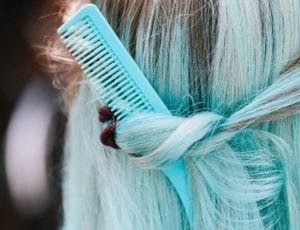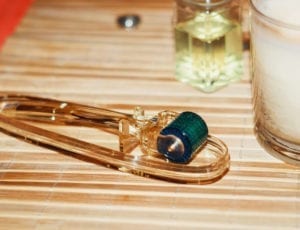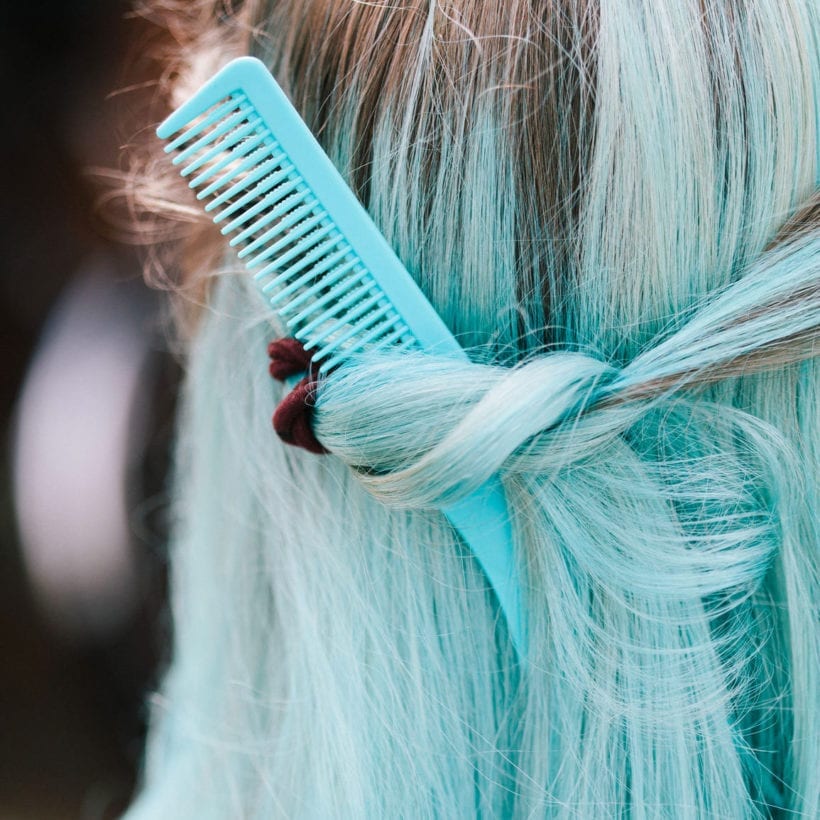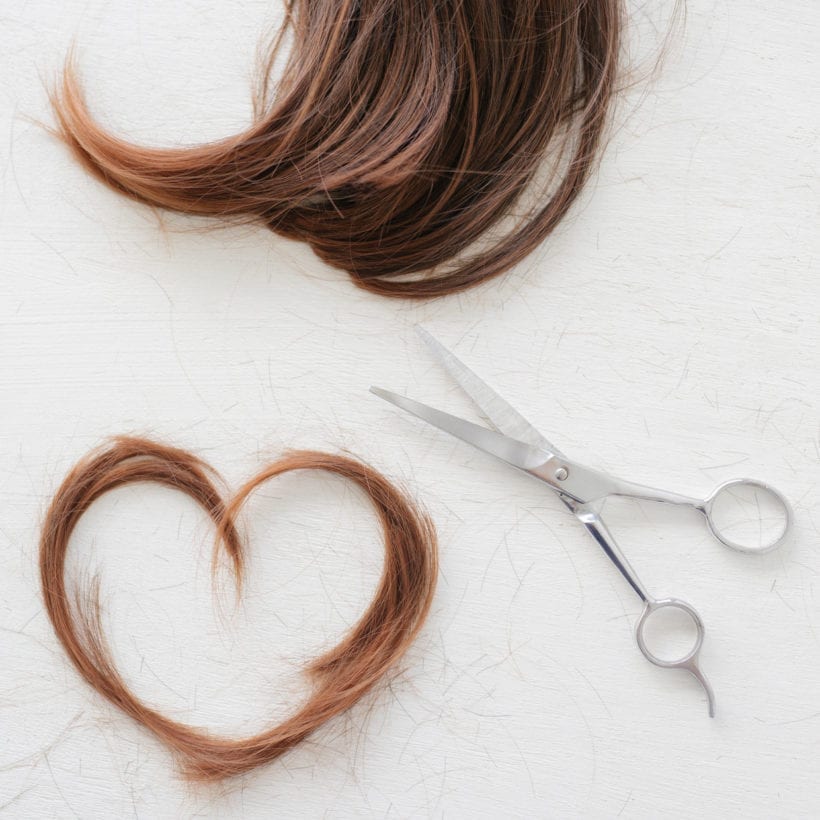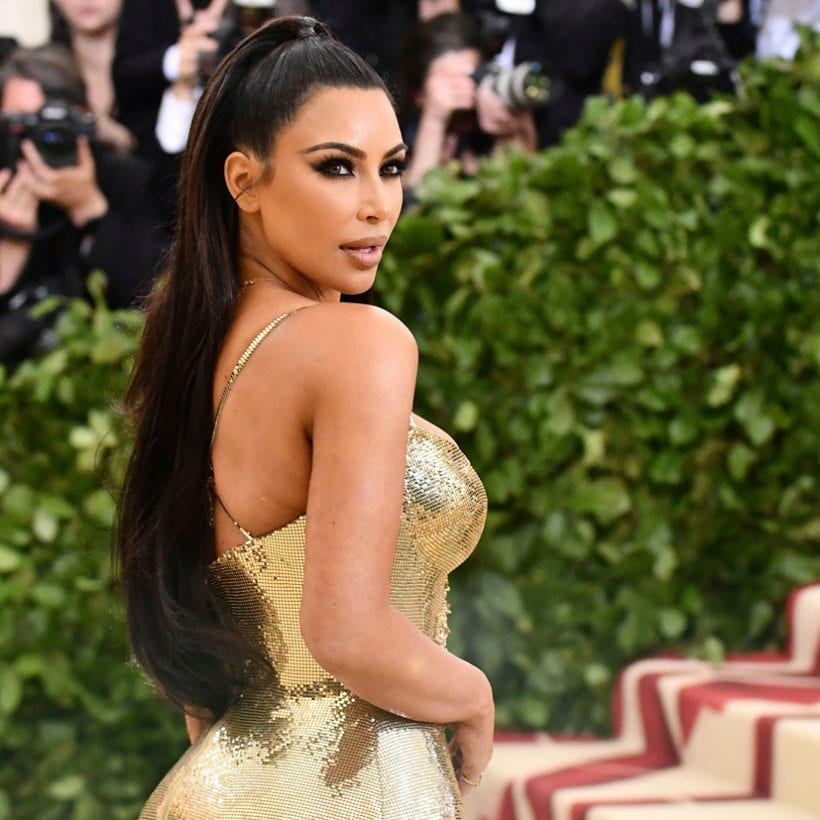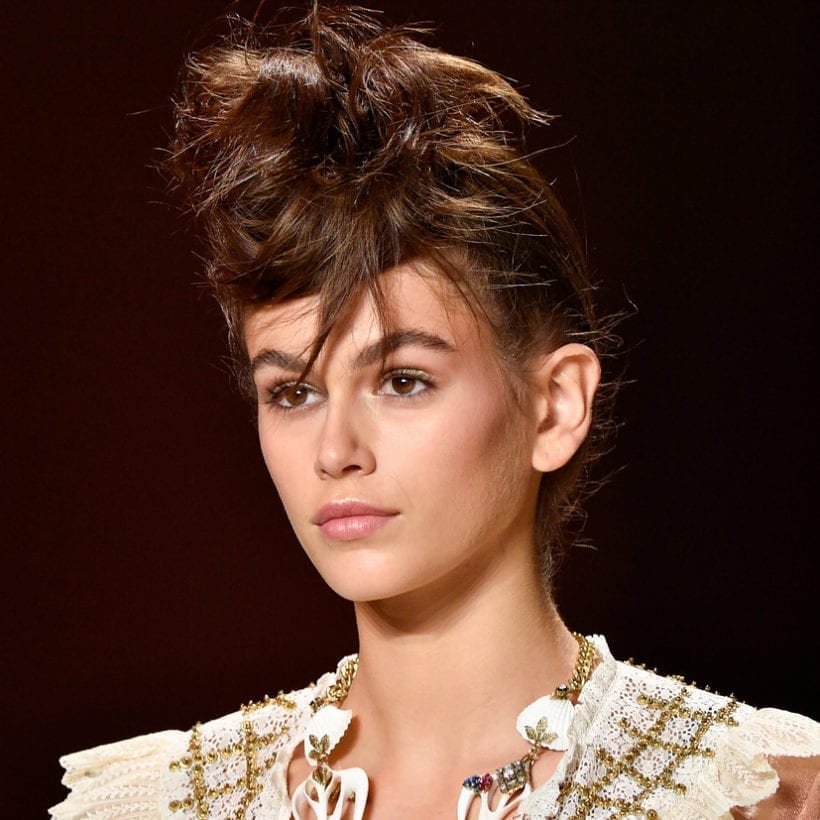All hairbrushes are tasked with the same job of smoothing out tangles and keeping frizz at bay, but they come in all sorts of shapes, sizes and textures, not to mention price points. How is one to know which will work best for their hair?
In short, the reason why there are so many brushes being sold on the market today is that no two heads of hair are the same. This is why it is so important to know what hair type category you fall under when searching for a hairbrush. Doing so will ensure that you successfully pull off your desired look, explains Lauren Paglionico, NYC-based hair colorist and owner of LRN BEAUTY.
How to Tell You Are Using the Wrong Type of Brush
The easiest way to know your brush is no good is if it is not untangling your strands, or worse, causing your hair to become knotted. Steer away from any brush that is leading to tangles. “If you are picking up a section of hair to style and the bristles do not go through the hair, you most likely need to select a different bristle,” recommends Gina Rivera, hairstylist and creator of By Gina. “If the bristle fails to glide through the hair, you have the wrong brush, which opens your hair to damage.”
“If the bristle fails to glide through the hair, you have the wrong brush, which opens your hair to damage.”
It is important to know which type of bristle will work best for your hair. “Synthetic brushes are made from materials such as nylon and other plastics and tend to work well with normal to wavy hair whether it is fine or coarse hair,” explains hairstylist Zeena Alli, who works at Mizu Hair Salon in New York City. “Boar bristle brushes are made with animal hair such as pig’s and are gentle enough for baby fine hair.” There are also mixed bristles brushes, which are made up of natural, boar and synthetic bristles. This type, Alli explains, is a great brush for all types of hair textures and density.
Brushes also come in all shapes and sizes. There are Denman brushes, which are made of nylon bristles that help reduce static and fight frizzies. “These are especially great for hair that is finer and dry which lends itself to static and tends to become frizzy,” adds Rivera. Thanks to their large size, paddle brushes allow you to style bigger sections of hair without generating additional tangles. An added benefit is that they contribute to leaving the hair shiny. Round brushes are great for adding volume, waves or even curls, notes Rivera. Be careful when choosing a size, as the smaller a round brush is in diameter, the hair is more likely to get caught and tangled. “Boar bristles brushes are great for dry hair, as they help distribute the scalp’s own natural oils evenly throughout the hair,” Rivera says. “This is also the right brush for promoting a healthy scalp because it stimulates getting blood to the scalp when you use it.” Lastly, she recommends vent brushes if you are pressed for time and you want an eclectic blowout. “If you want to cut down on blow-drying time, make sure to keep this brush close at hand,” she adds.
Your hair length matters too. You should aim to use a brush that matches your hair’s length. “Using a large round brush on short hair that cannot fit on the perimeter of the brush is not going to get you your desired look, as the perimeter of the brush is more than the length of the hair,” says Alli. Another bad move would be to use a large round brush on a pixie haircut. “A medium to small Mason Pearson as well as small round ceramic or natural bristle brush is recommended,” she adds.
The Best Brush for Every Hair Type
Straight
A good ol’ Mason Pearson brush, which has been beloved by generations, is ideal for those with straight hair looking to create a smooth finish. They are handmade and have a rubber-cushion pad that helps distribute the hair’s natural oil, which helps maintain shine. Conversely, a ceramic round brush can be used. “It is recommended to pre-dry the hair with just the blow dryer taking out 80-90 percent of wetness before putting a brush to it,” says Alli. “This saves time and trauma on the hair!”
Wavy
If your hair is full of loose waves, a ceramic round brush or a natural boar bristle brush will help untangle and smooth your strands out. “Natural boar bristle brushes are great for adding volume, defining layers on long hair and achieving a professional-looking at-home blowout,” notes Rivera. However, tempting as it is to use a ceramic round brush, Penny James, IAT-certified trichologist and owner of Penny James Salon in New York City, reminds her clients to be careful not to burn their hair. “The ceramic gets very hot like a curling iron and can cause burns or fraying if left wrapped around the hair too long,” she says.
Curly
Although those with curly hair are more prone to tangles, experts agree that you should avoid using an actual brush on this hair type. “When you shower, comb both the shampoo and conditioner from roots to ends,” Paglionico says. “Rinse, wring out your hair, apply your favorite product and use your hands to style, not a brush.” If you do feel the need to use an actual brush, opt for a natural boar bristle round brush or natural and synthetic brush. “Curly hair is more fragile — it needs brushes that will not break the hair easily,” says Alli. If you found boar bristle brushes to be too aggressive, then something like the wet brush, or shower brush, maybe your best bet. “These brushes are designed to be used on wet hair, so they are gentle, but effective at getting the knots out,” says Kim Bonondona, New York City-based hairstylist.
Coily
If your hair is thick or coarse, a paddle brush will work best. These are a “go-to” for Rivera and her team when they are working with clients or models who have thicker hair. “Because paddle brushes have a lot more teeth, they help smooth the hair cuticle while also detangling in the right curl patterns for coiled hair,” she says. “They allow you to take bigger sections while styling without generating additional tangles.” You can expect smoother and straighter hair from a paddle brush since it is larger and can cover even the thickest and waviest of hair. An added benefit is that they leave the hair nice and shiny since the bristles distribute the hair’s natural oils from top to bottom.
We only recommend products we have independently researched, tested, and loved. If you purchase a product found through our links, Sunday Edit may earn an affiliate commission.

